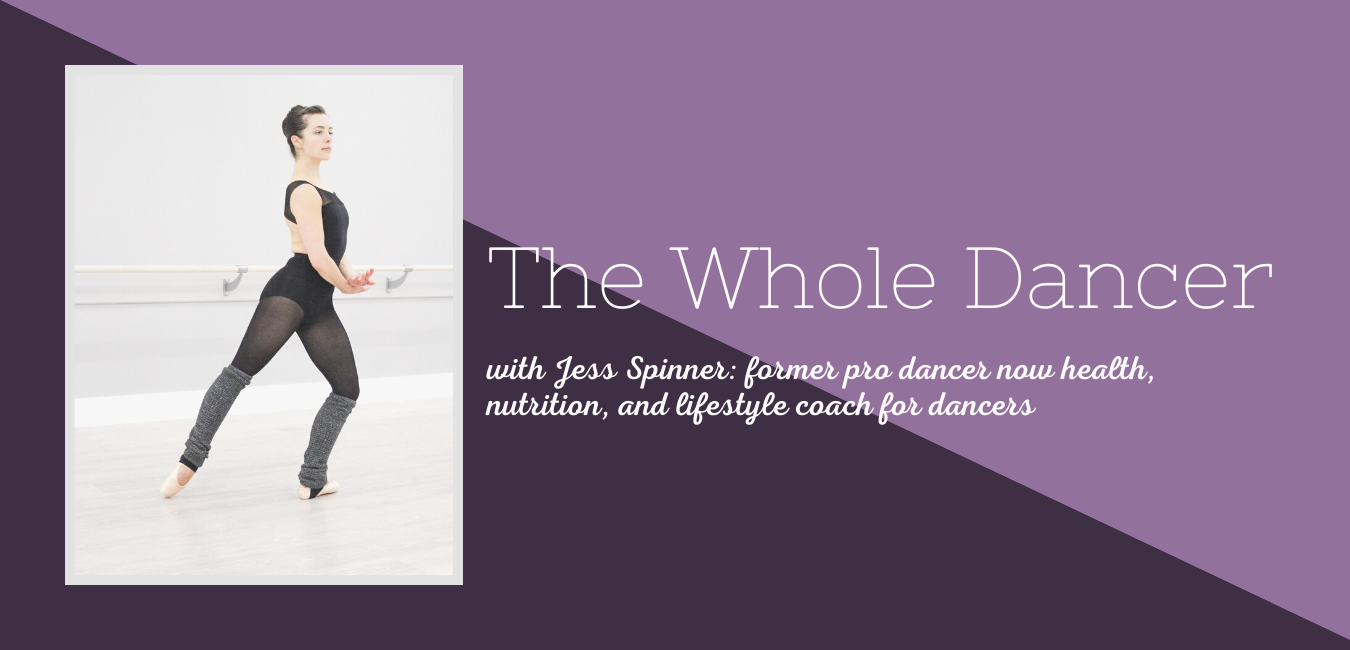The ballerina mindset, naturally can be a bit extreme.
You’re conditioned to be that way and even taught that it’s necessary for success in this art. If you want to be the best you’ve got to give it all, all the time…blood, sweat and tears.
It’s very easy for that mindset to transfer over to how you tackle food and eating.
This stems, once again, from messages you’ve likely received from teachers and artistic staff. As I’ve worked with dancer’s over the years, it somehow always surprises me to hear the messages they receive from teachers.
Whether you’ve heard extreme messages about food or you’ve come to an extreme place on your own, it can be hard to shake that mindset. Avoiding extremes in the first place is helpful, but what if you’re already in an extreme place with food?

Being too Restrictive
This is one of the most common extremes dancer’s fall into. In ballet, it feels that smaller is better. Therefore, when it comes to food wouldn’t less be more?
Less food should help you reach the goal of being “smaller”, right?
The truth is being too restrictive with food is extremely unhealthy. It can impact the health of your body, bones AND mind for the long term.
When dance teachers say things like, “stick to lettuce and water.” Ignore them. If they’re being serious, they’re extremely misguided and putting you in danger. If they’re joking, well, it’s still harmful from a mental health perspective.
When you get into the habit of restricting your food intake, even just on some days, it often leads to overeating.
Dancer’s who struggle with weight fluctuations (that was me all the way) are typically in and out of cycles of restricting and binge eating. You see, it’s hard to under eat for a long time because your body is not meant to function that way.
You will get hungry. It will be necessary to replenish the nourishment that’s been missing. You’ll likely be craving less healthy foods because your body is starved for the joy and pleasure of tasty food.
If you’re in patterns of restriction and/or bing eating, seek help. Find an eating disorder psychologist who knows the dancer mindset.
Let’s talk about “Clean” Eating
Clean eating involves a few key principles that align with basic principles of healthy eating:
- Eat more real foods.
- Eat for nourishment.
- More plant-based foods.
- Clean up your act.
This is one of those phrases that people use in a weird way. It’s not clearly defined so it can be exploited by marketers. Companies will say 100% “clean” ingredients. Without any real parameters behind that phrase, it really means nothing.
People use it on a personal level as well. “I’m into clean eating.” Ok…does that mean you’re only eating plant foods? Grass fed animal foods?
If you are a “clean” eater, does that mean you can never enjoy a piece of cake? Sometimes when you start to follow something like the clean eating movement it feels like you can never have food that’s purely about indulging.
A balanced eating plan and yes, even a healthy eating plan, allows for indulgences. If “eating clean” makes you feel deprived, move on.
What about Orthorexia
Getting overly obsessive with healthy eating can lead to negative consequences.
“Although not formally recognized in the Diagnostic and Statistical Manual, awareness about orthorexia is on the rise. The term ‘orthorexia’ was coined in 1998 and means an obsession with proper or ‘healthful’ eating.
…being aware of and concerned with the nutritional quality of the food you eat isn’t a problem in and of itself, people with orthorexia become so fixated on so-called ‘healthy eating’ that they actually damage their own well-being.”
Aim to enjoy healthy foods. Eat lots of fruits and vegetables but don’t connect being “good” or “bad” to your food choices. If you want to eat healthfully for the long term you have to allow indulgences and less healthy foods to be eaten AND enjoyed!
Let’s talk about Intuitive Eating…
One of the most sustainable and arguably healthy ways to look at food is through the lens of Intuitive Eating. I’d say eating this way is not extreme but rather quite balanced. You can practice Intuitive Eating while also sticking to a meal plan that resonates with you.
Here are the 10 Principles of Intuitive Eating:
- Reject the Diet Mentality
- Honor your Hunger
- Make Peace with Food
- Challenge the Food Police
- Discover the Satisfaction Factor
- Feel Your Fullness
- Cope with Your Emotions with Kindness
- Respect Your Body
- Movement – Feel the Difference
- Honor Your Health – Gentle Nutrition
I want to highlight that last one. The Whole Dancer approach to food and healthy eating for dancer’s encompasses so many Intuitive Eating Principles. Since you’re performing at such a highly athletic, competitive level there’s a lot of focus on “Honoring Your Health”. You can’t perform at your highest level without that attention to health but consider this:
“Make food choices that honor your health and taste buds while making you feel good. Remember that you don’t have to eat perfectly to be healthy. You will not suddenly get a nutrient deficiency or become unhealthy, from one snack, one meal, or one day of eating. It’s what you eat consistently over time that matters. Progress, not perfection, is what counts.”
My Advice: Avoid Labels
Eat foods you enjoy.
Prioritize plant foods.
You don’t have to define your eating style or food choices for anyone.
Make sure you’re eating enough! Pre-professional and professional dancer’s are much more likely to fall into the camp of under eating vs. over eating.
If you’re looking for support in finding balance, crafting a meal plan that fits your personal needs and reaching your body goals healthfully check out The Dancer’s Best Body Program – enrolling now thru 1.19.20 only.
Figuring out what foods and eating styles work best for you seems like it should be simple but we tend to overthink it. You can avoid the extremes and reach your goals.
resources:
Clean Eating – Mayo Clinic
Photo by Daria Rom on Unsplash
